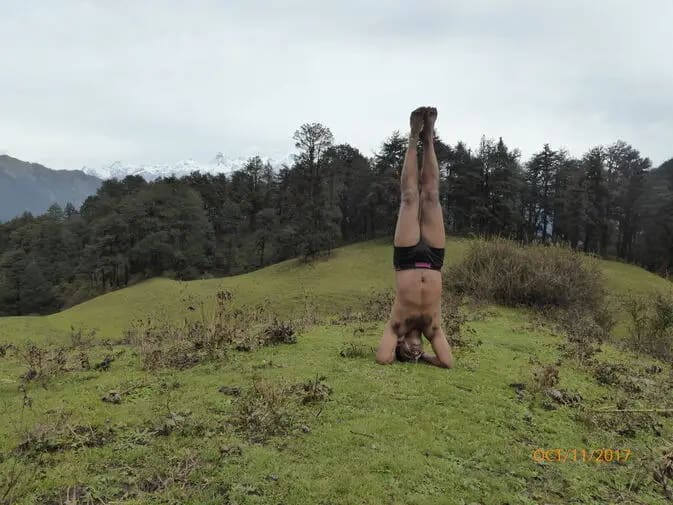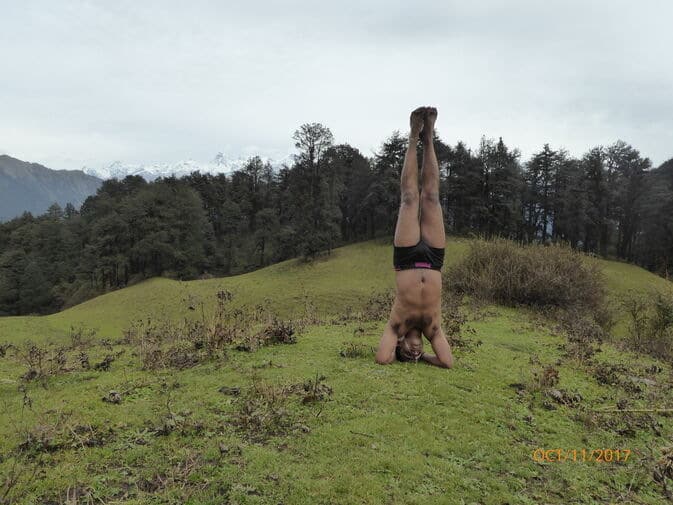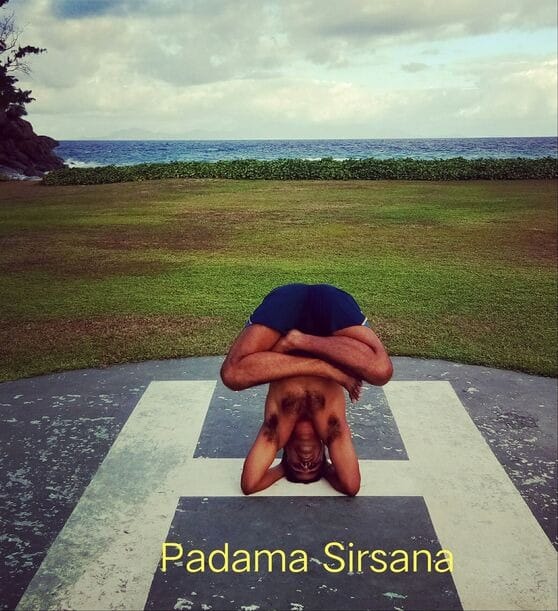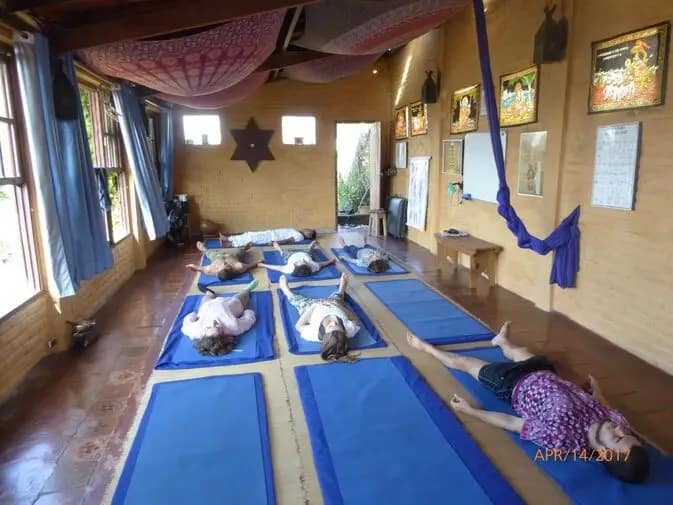Sirsasana (The Headstand Pose)
Table of Contents
What is Sirsasana (Headstand Pose)
Sirsasana, also known as Shirshasana, is a Sanskrit term meaning “head pose.” Sirsha means ‘head,’ and asana is associated with the head.
Sirsasana is an advanced yoga pose traditionally practised to enhance Brahmacharya (celibacy) practice.
The headstand pose is considered the “King of the Asanas.” Hatha Yoga is practised as both an asana and a mudra.
Modern yoga practice describes Sirsasana as an inverted pose, while the Hatha Yoga Pradipika refers to it as Viparita Karani mudra.
History of Shirshasana
In the 15th century, it was widely used as a yoga posture called Viparita Karani, also known as the Inverted Pose. Yogis mainly practised Sirsasana to expand their Ojas or shine upwards.
It was primarily a part of Tapah or austerity, but its main objective was to regulate the energy flow towards the crown chakra to attain salvation.
In the 11th century, the great yogi Hemachandra defined this posture as Duryodhanasana or Kapalikarna asana for head practices.
How to do Shirshasana
Yoga for beginners should practice Shirshasana under the guidance of a registered yoga teacher. During yoga teacher training and yoga retreats, a person practices yoga as follows:
STEP 1- Kneel on the floor, be at ease, and make your breathing gentle.
STEP 2- Set your body on the ground, place your elbows on the mat, and interlock your fingers.
STEP 3 – Please make a cup shape with your forefingers and rest the crown of your head against the palms.
STEP 4 – After shifting your body weight onto your head, please lift your knees and maintain balance on your elbows.
STEP 5 – Engage your core and lift one leg at a 75-degree to 90-degree angle.
STEP 6- Try to kick on the other leg, and after joining the legs together, use the shoulder muscles to stay there longer.
STEP 7 – Maintain your body weight on your head and use your elbows to balance your body.
STEP 8—Focus all your attention on the third eye chakra and hold the posture according to your physical efficiency.
STEP 9—Stay calm and breathe normally. Feel the extension of the spinal cord and the stretching of the gluteus and leg muscles.
STEP 10—After bending your knees, start stepping down and contracting them towards your chest. Finally, place them on the floor and drop your head, arms, and shoulders on the ground.
Can Shirshasan regrow your hair?
It is believed that Sirsansana is helpful for regrowing hair because it increases blood flow to the scalp.
In ancient times, Shirshasana was primarily practiced to calm the mind, which is also one of the main reasons for promoting hair growth.
It also stimulates dormant hair follicles to promote their long life and protects them from premature greying.
Why is Shirsasana called the King of Asana?
Shirshasan is known as the king of asanas due to its profound spiritual benefits. After practicing it, a person can feel immediate effects on the Sahasrara chakra (crown channel).
It possesses excellent physical and mental healing properties, curing various ailments, and is considered the king of Asanas.
Benefits of Shirshasana
Sirsasana yoga benefits our physical, mental, and astral bodies significantly. These are the main benefits of practising Shirshasana:
-
- Sirsasana is a fantastic posture that keeps the spine healthy and circulates blood to the spinal cord.
-
- It works tremendously on the digestive tract. It has terrific work on the lever.
-
- It is an excellent Asana for sharpening the brain and memory. It has fascinating work on OCD issues.
-
- Shirsana is highly recommended for Bramcharya practices to increase Ojas.
-
- After practising Shirsasana, our energy starts to flow upwards, which is very effective for spiritual growth.
-
- It improves our eyesight and has a significant impact on our eyes.
-
- For small children, it is recommended to practice this exercise to help increase their height and improve their concentration levels.
-
- It is perfect for reducing fluid retention in the legs and feet. The benefits of Sirsasana for hair growth are also beneficial for the health of the hair.
-
- Headstand pose stimulates the lymphatic system, which is excellent for releasing toxins from the body.
-
- The benefits of Janu Sirsasana chakra enhance oxygen supply to the brain and play a crucial role in maintaining a calm nervous system.
-
- Yoga beginners should practice it to improve their body’s strength and balance.
-
- Advanced yoga practitioners should hold this posture for an extended duration to focus their entire attention on the third eye chakra.
Can I do Shirsasana every day?
Of course. Sirsasana should be practised every day to achieve advanced results. It has a significant impact on our physical shape.
People who practice it in their daily routine get a shiny face glow and attain the highest level of Ojas and spiritual growth.
Precautions for Shirshasana
-
- If someone has high BP or cholesterol levels, they should not hold Shirshasana long.
- It should not be practised when having any joint problems.
- Sirshasana should not be attempted to treat Glaucoma because it may increase blood circulation to the eyes and harm eyesight.
- Young children should avoid it due to their fragile skulls and bones.
- One should not practise Shirsasana after having heart problems.
- People who have migraines or headaches should avoid them until they get relief.
- It should not be attempted in pregnancy.
- One should avoid practising it if their pulse rate increases.
Note: Practitioners should rest properly in Yoga Nidra after having Sirsasana.
If someone feels faint or experiences issues after Shirsasana, they may want to consider Reiki healing treatments, which can have a significant impact on the body.
Jin Shin Jyutsu and Pranic Healing are also exceptionally beneficial for resolving issues related to Shirsasana practice.
Tags:






